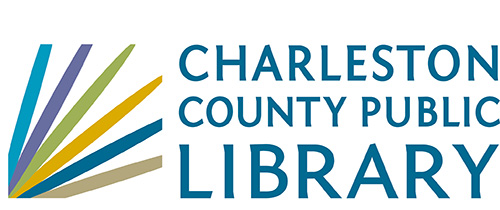Menu
×
Folly Beach Library
9 a.m. - 5:30 p.m.
Phone: (843) 588-2001
Edgar Allan Poe/Sullivan's Island Library
Closed for renovations
Phone: (843) 883-3914
West Ashley Library
9 a.m. - 7 p.m.
Phone: (843) 766-6635
Wando Mount Pleasant Library
9 a.m. - 8 p.m.
Phone: (843) 805-6888
Village Library
9 a.m. - 6 p.m.
Phone: (843) 884-9741
St. Paul's/Hollywood Library
9 a.m. - 8 p.m.
Phone: (843) 889-3300
Otranto Road Library
9 a.m. - 8 p.m.
Phone: (843) 572-4094
Mt. Pleasant Library
9 a.m. - 8 p.m.
Phone: (843) 849-6161
McClellanville Library
9 a.m. - 6 p.m.
Phone: (843) 887-3699
Keith Summey North Charleston Library
9 a.m. - 8 p.m.
Phone: (843) 744-2489
John's Island Library
9 a.m. - 8 p.m.
Phone: (843) 559-1945
Hurd/St. Andrews Library
9 a.m. - 8 p.m.
Phone: (843) 766-2546
Miss Jane's Building (Edisto Library Temporary Location)
9 a.m. - 4 p.m.
Phone: (843) 869-2355
Dorchester Road Library
9 a.m. - 8 p.m.
Phone: (843) 552-6466
John L. Dart Library
9 a.m. - 7 p.m.
Phone: (843) 722-7550
Baxter-Patrick James Island
9 a.m. - 8 p.m.
Phone: (843) 795-6679
Main Library
9 a.m. - 8 p.m.
Phone: (843) 805-6930
Bees Ferry West Ashley Library
9 a.m. - 8 p.m.
Phone: (843) 805-6892
Mobile Library
9 a.m. - 5 p.m.
Phone: (843) 805-6909
Today's Hours
Folly Beach Library
9 a.m. - 5:30 p.m.
Phone: (843) 588-2001
Edgar Allan Poe/Sullivan's Island Library
Closed for renovations
Phone: (843) 883-3914
West Ashley Library
9 a.m. - 7 p.m.
Phone: (843) 766-6635
Wando Mount Pleasant Library
9 a.m. - 8 p.m.
Phone: (843) 805-6888
Village Library
9 a.m. - 6 p.m.
Phone: (843) 884-9741
St. Paul's/Hollywood Library
9 a.m. - 8 p.m.
Phone: (843) 889-3300
Otranto Road Library
9 a.m. - 8 p.m.
Phone: (843) 572-4094
Mt. Pleasant Library
9 a.m. - 8 p.m.
Phone: (843) 849-6161
McClellanville Library
9 a.m. - 6 p.m.
Phone: (843) 887-3699
Keith Summey North Charleston Library
9 a.m. - 8 p.m.
Phone: (843) 744-2489
John's Island Library
9 a.m. - 8 p.m.
Phone: (843) 559-1945
Hurd/St. Andrews Library
9 a.m. - 8 p.m.
Phone: (843) 766-2546
Miss Jane's Building (Edisto Library Temporary Location)
9 a.m. - 4 p.m.
Phone: (843) 869-2355
Dorchester Road Library
9 a.m. - 8 p.m.
Phone: (843) 552-6466
John L. Dart Library
9 a.m. - 7 p.m.
Phone: (843) 722-7550
Baxter-Patrick James Island
9 a.m. - 8 p.m.
Phone: (843) 795-6679
Main Library
9 a.m. - 8 p.m.
Phone: (843) 805-6930
Bees Ferry West Ashley Library
9 a.m. - 8 p.m.
Phone: (843) 805-6892
Mobile Library
9 a.m. - 5 p.m.
Phone: (843) 805-6909
Patron Login
menu
Item request has been placed!
×
Item request cannot be made.
×
 Processing Request
Processing Request
Law School Clinic and Community Legal Services Providers Collaborate to Advance the Remedy of Implied Warranty of Habitability in Missouri.
Item request has been placed!
×
Item request cannot be made.
×
 Processing Request
Processing Request
- Author(s): Tokarz, Karen; Schmook, Zachary
- Source:
Washington University Journal of Law & Policy; 2017, Vol. 53, p169-187, 19p- Subject Terms:
- Source:
- Additional Information
- Subject Terms:
- Abstract: Missouri tenants have few defenses to uninhabitable housing conditions. In a statistical study conducted by the Washington University Civil Rights & Community Justice Clinic and the Metropolitan Saint Louis Equal Housing & Opportunity Council, which encompassed 6,369 landlord-tenant cases from the 2012 calendar year, only two cases (0.03%) resulted in a judgment in favor of the tenant, while 4,934 cases (77.5%) resulted in judgments in favor of the landlord, with the remaining cases being dismissed without a judgment. These findings suggest that unpresented low-income tenants seeking to raise defenses in rent and possession and eviction cases in the Missouri state courts face significant difficulties. The trial court's decision in Kohner Properties, Inc. v. Johnson/currently before the Missouri Supreme Court, puts the practical application of a key affirmative defense--the implied warranty of habitability--at risk. The remedy of implied warranty of habitability developed, in part, as a response to a chronic and prolonged housing shortage, particularly for low-income households. This remedy is necessaiy because common law constructive eviction, which requires the tenant to abandon the premises, is an insufficient remedy for low-income tenants. The remedy of implied warranty of habitability is crucial to balancing the interests of landlords and tenants, and maintaining an adequate supply of safe, livable, quality housing in Missouri. [ABSTRACT FROM AUTHOR]
- Abstract: Copyright of Washington University Journal of Law & Policy is the property of Washington University School of Law and its content may not be copied or emailed to multiple sites or posted to a listserv without the copyright holder's express written permission. However, users may print, download, or email articles for individual use. This abstract may be abridged. No warranty is given about the accuracy of the copy. Users should refer to the original published version of the material for the full abstract. (Copyright applies to all Abstracts.)
Contact CCPL
Copyright 2022 Charleston County Public Library Powered By EBSCO Stacks 3.3.0 [350.3] | Staff Login


No Comments.